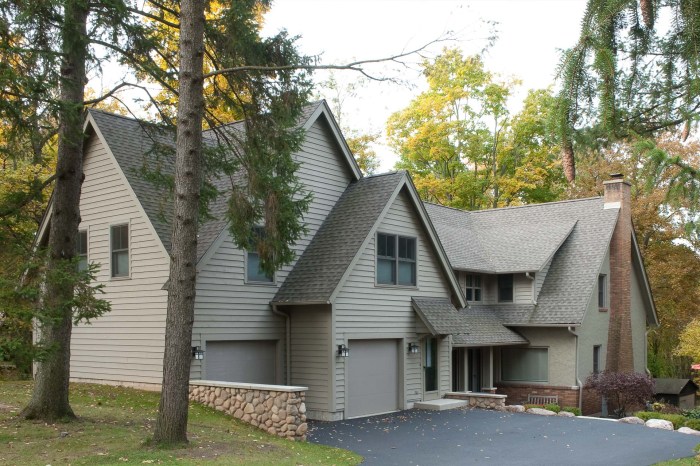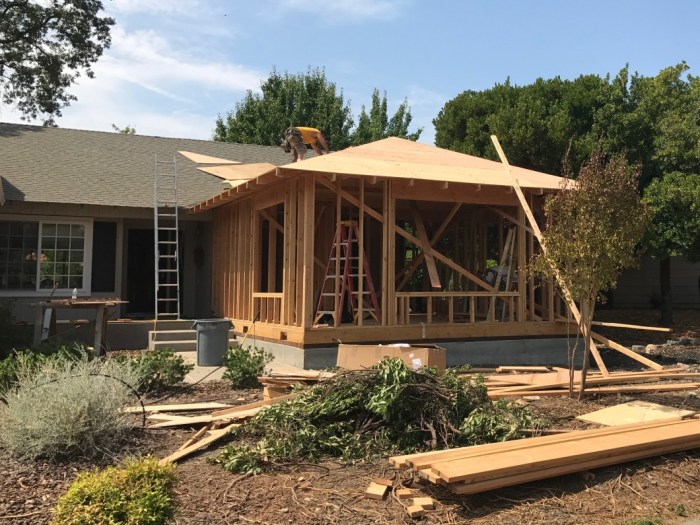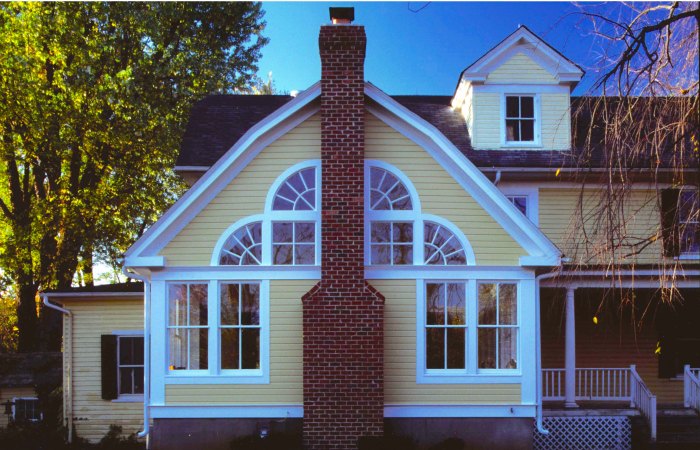As Hiring a Local Home Addition Architect: What to Know takes center stage, this opening passage beckons readers with casual formal language style into a world crafted with good knowledge, ensuring a reading experience that is both absorbing and distinctly original.
Delve into the realm of local home addition architects and uncover essential insights that will guide you through the process with confidence and clarity.
Understanding the Role of a Home Addition Architect

When considering a home addition project, hiring a local home addition architect can make a significant difference in the outcome. These professionals play a crucial role in the planning, design, and execution of home addition projects, ensuring that the new space seamlessly integrates with the existing structure while meeting the client's needs and preferences.
Responsibilities of a Home Addition Architect:
- Collaborating with clients to understand their vision and requirements for the home addition.
- Developing design concepts and plans that align with the client's goals and budget.
- Obtaining necessary permits and approvals from local authorities for the construction.
- Working closely with contractors and builders to oversee the construction process and ensure quality and adherence to the design.
- Addressing any challenges or changes that may arise during the project to ensure a successful outcome.
Key Skills and Qualifications Required:
- Proficiency in architectural design software and tools.
- Strong communication and interpersonal skills to work effectively with clients and other professionals.
- Knowledge of building codes and regulations to ensure compliance with legal requirements.
- Creativity and problem-solving abilities to come up with innovative solutions for design challenges.
- Education and training in architecture or a related field, along with relevant experience in home addition projects.
Importance of Hiring a Specialized Architect:
When it comes to home additions, hiring a specialized architect is crucial for several reasons. These professionals have specific expertise in designing and planning home additions, ensuring that the new space integrates seamlessly with the existing structure. They also have a deep understanding of the technical and structural requirements involved in such projects, helping to avoid costly mistakes and ensure a successful outcome.
Researching Local Home Addition Architects

When looking for a local home addition architect, it is crucial to conduct thorough research to ensure you find a reputable professional who can bring your vision to life. Here are some methods for finding the right architect, checking their credentials and reviews, and evaluating their portfolio.
Finding Reputable Local Home Addition Architects
- Ask for recommendations from friends, family, or neighbors who have recently completed a home addition project.
- Check online directories and websites that list architects in your area.
- Contact local architectural firms and inquire about their experience with home additions.
Checking Credentials and Reviews
- Verify that the architect is licensed and registered with the appropriate state board.
- Look for reviews and testimonials from previous clients to gauge the architect's reputation and quality of work.
- Check if the architect is a member of professional organizations like the American Institute of Architects (AIA).
Evaluating a Portfolio of a Home Addition Architect
- Review the architect's portfolio to see examples of their past home addition projects.
- Pay attention to the style, creativity, and attention to detail in their designs.
- Ask for references and follow up with past clients to get feedback on their experience working with the architect.
Initial Consultation and Planning
When meeting with a home addition architect for the initial consultation, it is important to come prepared with your ideas, budget, and any specific requirements you have for the project. This meeting serves as an opportunity for you to discuss your vision for the home addition and for the architect to understand your needs and goals.
Setting Clear Expectations and Goals
During the initial consultation, it is crucial to set clear expectations and goals for the home addition project. This includes discussing your budget, timeline, and any specific design preferences you may have. By clearly outlining your expectations from the beginning, you can ensure that the architect understands your vision and can work towards achieving your goals effectively.
- Discuss your budget constraints upfront to avoid any surprises later in the project.
- Communicate your desired timeline for the home addition to ensure that the architect can plan accordingly.
- Share any specific design preferences or must-have features for the addition to guide the architect in the planning process.
Assessing Feasibility of Home Addition
Architects assess the feasibility of a home addition based on the existing structure of your home. They will consider factors such as the structural integrity of the building, zoning regulations, and the potential impact on the overall design and functionality of your home.
By evaluating these aspects, architects can determine the best approach to incorporate the home addition seamlessly into your existing space.
It is essential for architects to conduct a thorough assessment of the existing structure to ensure that the home addition is both structurally sound and aesthetically pleasing.
Budgeting and Cost Considerations
When planning a home addition project, it's crucial to carefully consider the budget and cost implications involved. Hiring a local home addition architect comes with its own set of costs, but there are strategies that can help manage expenses effectively.
Typical Costs Associated with Hiring a Local Home Addition Architect
- Architectural fees: These can vary depending on the complexity of the project and the experience of the architect. It is common for architects to charge a percentage of the total project cost or an hourly rate.
- Permit fees: Your architect will help you navigate the permitting process, which may include additional fees.
- Consultation and site visit fees: Architects often charge for initial consultations and site visits to assess the scope of the project.
Strategies for Budgeting and Cost Management
- Set a realistic budget: Define your budget early on and communicate it clearly with your architect to ensure that the design aligns with your financial constraints.
- Prioritize your needs: Identify must-have elements for your home addition and focus your budget on those key features.
- Consider value engineering: Work with your architect to find cost-effective alternatives without compromising on quality and functionality.
How Architects Help Optimize Costs
- Efficient design: Architects can maximize space utilization and energy efficiency, reducing operational costs in the long run.
- Material selection: By recommending durable materials that fit within your budget, architects can help you avoid costly maintenance and repairs in the future.
- Contractor negotiations: Architects can assist in selecting reputable contractors and obtaining competitive bids to ensure cost-effective construction.
Design Process and Collaboration

When working with a home addition architect, the design process plays a crucial role in bringing your vision to life. Effective communication and collaboration with the architect are key to ensuring that your home addition project meets your expectations and requirements.
Importance of Effective Communication
Effective communication with your home addition architect is essential for conveying your ideas, preferences, and specific needs for the project. Clear communication helps in avoiding misunderstandings and ensures that the design aligns with your vision. Regular updates and feedback sessions with the architect can help in refining the design to better suit your requirements.
- Clearly articulate your goals and objectives for the home addition project.
- Provide detailed information about your lifestyle, habits, and any specific requirements you may have.
- Be open to suggestions and feedback from the architect to enhance the design.
Collaboration with the Architect
Collaborating with the architect involves working together as a team to create a design that not only meets your needs but also incorporates the architect's expertise and creativity. By sharing ideas, discussing options, and exploring different design possibilities, you can achieve a home addition that is both functional and aesthetically pleasing.
- Participate actively in design meetings and brainstorming sessions with the architect.
- Be willing to compromise and consider alternative solutions proposed by the architect.
- Provide timely feedback and make decisions promptly to keep the design process on track.
Conclusive Thoughts
In conclusion, navigating the realm of hiring a local home addition architect requires careful consideration and informed decision-making. With the right knowledge and understanding, you can embark on your home addition project with ease and assurance.
Common Queries
What qualifications should I look for in a home addition architect?
Look for architects with experience in home additions, strong design skills, and relevant certifications.
How can I find a reputable local home addition architect?
Ask for recommendations from friends or family, check online reviews, and verify credentials before making a decision.
What is the typical cost range for hiring a local home addition architect?
Costs can vary depending on the scope of the project and the architect's experience, but typically range from X to Y.










